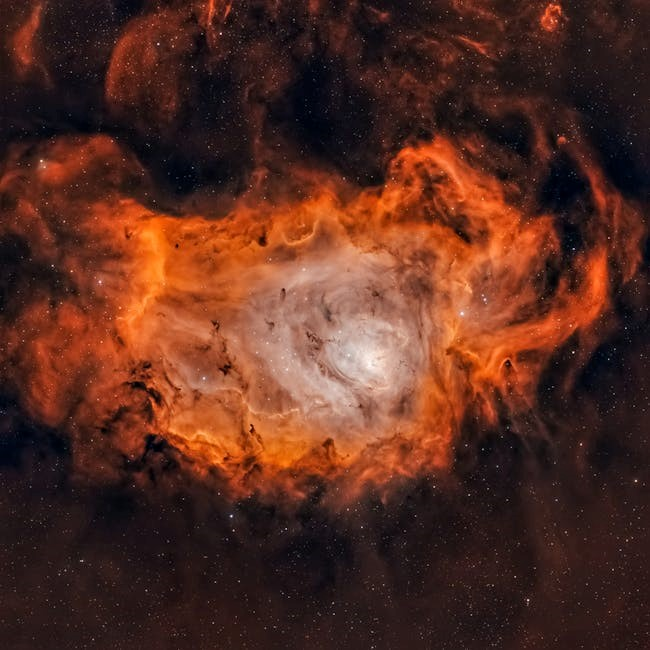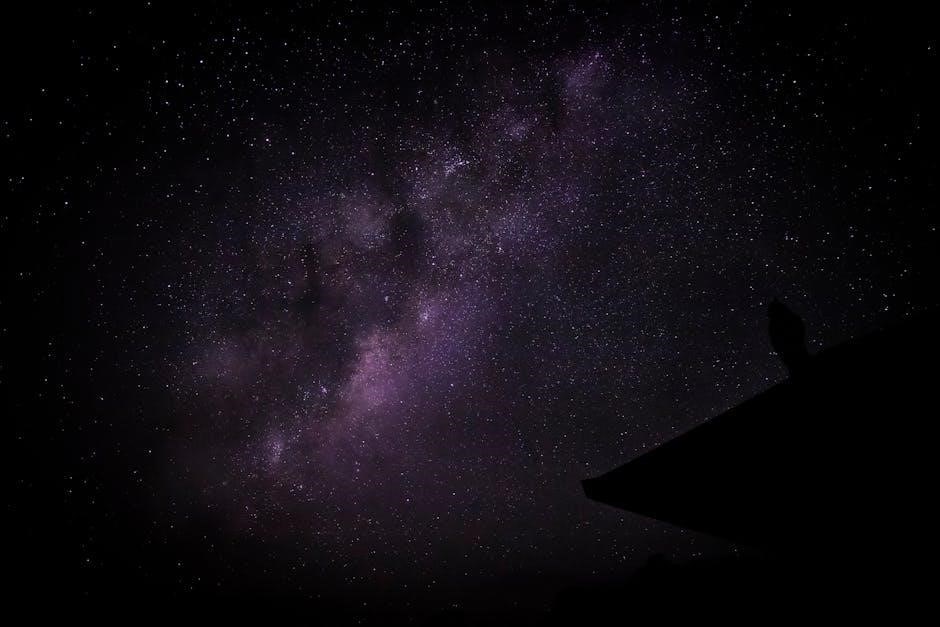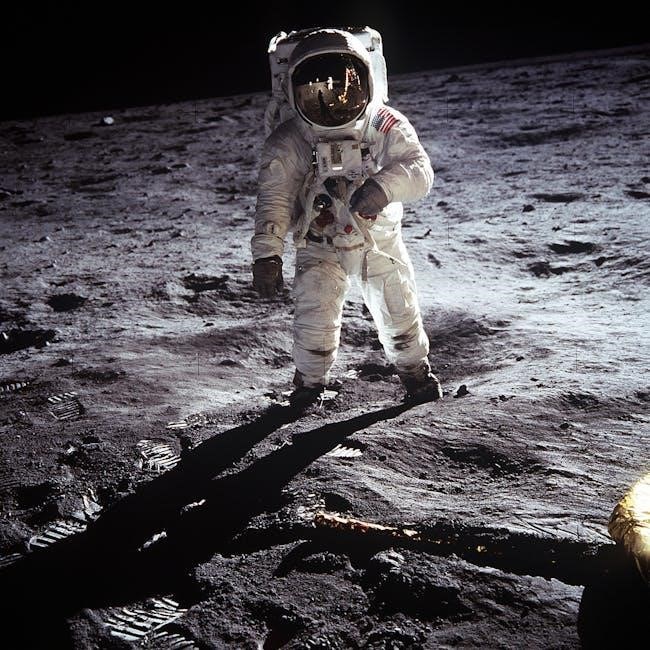the ultimate hitchhiker’s guide to the galaxy

Douglas Adams’ seminal work blends humor and philosophy, exploring existence through Arthur Dent’s journey after Earth’s destruction. A comedic yet profound commentary on life, technology, and the cosmos.
1.1 Overview of the Book and Its Significance
The Hitchhiker’s Guide to the Galaxy is a seminal work by Douglas Adams, blending comedy, science fiction, and philosophy; The book follows Arthur Dent’s misadventures after Earth’s demolition, exploring themes of existence, technology, and humanity. Its unique blend of humor and profundity has made it a cultural phenomenon, resonating with readers worldwide. The novel’s significance lies in its ability to entertain while provoking thought on life’s mysteries, cementing its place as a timeless classic in science fiction literature and popular culture.
1.2 The Author: Douglas Adams and His Vision
Douglas Adams, a British writer, imbued The Hitchhiker’s Guide to the Galaxy with his unique wit and philosophical curiosity; His vision was to merge humor with deep existential questions, creating a narrative that is both entertaining and thought-provoking. Adams’ work reflects his fascination with technology, humanity, and the absurdities of life, offering readers a fresh perspective on the universe. His writing style and imaginative storytelling have left an indelible mark on science fiction and comedy, making him a beloved author across generations.
Main Characters and Their Roles
The story revolves around Arthur Dent, Ford Prefect, Trillian, Marvin, and Zaphod Beeblebrox, each playing unique roles in navigating the galaxy’s absurdities and adventures.
2.1 Arthur Dent: The Reluctant Hitchhiker
Arthur Dent, the last Earthman, is thrust into an unexpected journey after his home’s demolition. Clumsy and ordinary, he embodies human resilience amidst cosmic chaos, seeking meaning and survival.
2.2 Ford Prefect: The Alien Researcher
Ford Prefect, an alien from Betelgeuse, is a researcher for the Hitchhiker’s Guide to the Galaxy. Calm and resourceful, he rescues Arthur Dent, embodying a mix of logic and humor. His knowledge and composure starkly contrast with Arthur’s chaos, making him a crucial guide in the vast, unpredictable universe they navigate together.
2.3 Trillian: The Human Woman in Space
Trillian, a brilliant and resourceful human woman, is unexpectedly rescued by Zaphod Beeblebrox and joins the crew of the Heart of Gold. Her calm demeanor and sharp intellect make her a standout character. Trillian’s journey from Earth to the vastness of space highlights her adaptability and resilience. She represents humanity’s potential for growth and understanding in an unpredictable universe, often serving as a voice of reason amidst chaos. Her unique perspective enriches the story, making her an integral part of the crew’s adventures.
2.4 Marvin: The Paranoid Android
Marvin, the paranoid android, is a deeply depressed yet intelligent being, burdened by existential dread. His pessimistic outlook and witty sarcasm provide comic relief while exploring themes of artificial intelligence and consciousness. Marvin’s ability to process vast information contrasts with his emotional despair, making him a tragic yet relatable character. His interactions with Arthur and the crew highlight the absurdities of life, showcasing his unique perspective on the universe and its inherent meaninglessness. Marvin’s journey mirrors humanity’s existential struggles, offering a poignant commentary on technology and emotion. His presence enriches the narrative with philosophical depth and humor.
2.5 Zaphod Beeblebrox: The Two-Headed President
Zaphod Beeblebrox, the charismatic and eccentric two-headed president of the galaxy, embodies recklessness and ambition. His dual heads symbolize his conflicting personalities: one for charm and the other for cunning. As a central figure, Zaphod’s presidency is marked by self-interest and unpredictability. His theft of the Heart of Gold spaceship showcases his audacity and drive for adventure. Despite his flaws, Zaphod’s antics propel the story forward, blending humor with intergalactic politics. His character represents the chaotic nature of power and the unpredictability of the universe, making him a memorable and pivotal figure in the narrative.

Key Themes and Philosophical Ideas
The book explores existential questions, absurdity, and technology’s impact on society, blending humor with profound reflections on life, the universe, and humanity’s place within it.
3.1 The Search for the Ultimate Answer (42)
The ultimate answer to life, the universe, and everything is revealed as 42, calculated by Deep Thought over 7.5 million years. This enigmatic number symbolizes humanity’s existential quest for meaning. The story highlights the absurdity of seeking a simple answer to complex questions, questioning the nature of existence and knowledge. The search for the ultimate question becomes a metaphor for humanity’s eternal pursuit of purpose, blending humor with profound philosophical inquiry into life’s mysteries and the futility of seeking absolute truth in an infinite cosmos.
3.2 The Absurdity of Life and the Universe
The book masterfully explores the absurdity of existence through its comedic and satirical lens. Earth’s destruction for a hyperspace bypass and the search for a meaningless “ultimate answer” (42) highlight life’s inherent chaos. The Vogons’ bureaucratic cruelty and Marvin’s existential despair exemplify the universe’s indifference. Adams uses humor to underscore the futility of seeking logic in an illogical cosmos, inviting readers to embrace the absurdity and find meaning in the meaningless. This theme resonates as a universal commentary on humanity’s quest to make sense of an often nonsensical world.
3.3 The Impact of Technology on Society
The book humorously critiques technology’s pervasive role in society, often highlighting its absurdities. The Heart of Gold’s Infinite Improbability Drive exemplifies technological marvels that defy understanding, while Deep Thought’s 7.5-million-year computation underscores the futility of relying on machines for meaning. Adams satirizes how societies blindly embrace technology, losing touch with human connection. The Vogons’ bureaucratic over-reliance on machines and Marvin’s existential despair reflect the dehumanizing effects of unchecked technological advancement. This theme serves as a cautionary tale about the consequences of prioritizing innovation over introspection and empathy.
The Supercomputer Deep Thought
Deep Thought, a colossal supercomputer, was designed to find the Answer to the Ultimate Question of Life, the Universe, and Everything. Built by hyper-intelligent beings, it computed the answer as 42 over 7.5 million years.
4.1 The Concept of Deep Thought
Deep Thought, a colossal supercomputer, was created to find the Answer to the Ultimate Question of Life, the Universe, and Everything. Built by hyper-intelligent beings, it spent 7.5 million years processing data. The computer’s design symbolized humanity’s quest for existential understanding, blending technology and philosophy. Its creation highlighted the flaws in seeking simplistic answers to complex questions, as the answer it provided, 42, lacked a clear question, leaving beings bewildered. This concept underscores the futility of relying solely on logic to understand existence.
4.2 The Significance of the Number 42
The number 42 is the enigmatic answer to the Ultimate Question of Life, the Universe, and Everything, calculated by Deep Thought after 7.5 million years. Its significance lies in its absurdity, as the question itself remains unknown. This paradox symbolizes the futility of seeking definitive answers to life’s mysteries. 42 has become a cultural symbol, often referenced in science and technology, reflecting humanity’s quest for meaning in an seemingly meaningless cosmos. Its enduring popularity highlights the blend of humor and philosophy in Adams’ work, leaving fans endlessly speculating about its hidden significance.

The Vogons and Their Role
The Vogons, hideous bureaucratic aliens, serve the Galactic Government, infamous for destroying Earth. Their atrocious poetry and relentless governance drive the narrative’s absurdity and conflict.
5.1 The Vogons as Antagonists
The Vogons are the primary antagonists, serving as the Galactic Government’s brutal enforcers. Their destruction of Earth to build a hyperspace bypass sets the story in motion. These hideous, bureaucratic aliens embody the universe’s indifference and absurdity. Their relentless pursuit of order and efficiency drives the narrative’s conflict, forcing Arthur Dent and his companions into a desperate, cosmic adventure. The Vogons’ cruel nature and penchant for atrocious poetry highlight their role as both antagonists and symbols of existential despair in Douglas Adams’ satirical universe.
5.2 Vogon Poetry and Its Purpose
Vogon Poetry is notoriously the third worst in the universe, serving as a form of psychological torture. Its purpose is not artistic but to inflict mental anguish, reflecting the Vogons’ brutal and bureaucratic nature. The poetry’s grotesque and meaningless structure embodies the absurdist themes of the book. It is used to break spirits and assert control, highlighting the Vogons’ role as enforcers of the galaxy’s oppressive systems. This twisted form of expression underscores the novel’s satirical critique of authority and the bleakness of existence.
The Heart of Gold and the Infinite Improbability Drive
The Heart of Gold, stolen by Zaphod, features the Infinite Improbability Drive, enabling faster-than-light travel by manipulating probability. This revolutionary technology drives the story’s unpredictable adventures.
6.1 The Spaceship’s Unique Technology
The Heart of Gold’s Infinite Improbability Drive revolutionizes space travel by manipulating probability fields, enabling journeys through impossible conditions. This technology allows the ship to traverse dimensions and bypass physical limitations, making it a cornerstone of the story’s intergalactic adventures. Its unique design and operation are central to the narrative, providing both a plot device and a philosophical metaphor for the unpredictability of existence.
6;2 The Role of the Ship in the Story
The Heart of Gold serves as the primary vessel for the story’s adventures, enabling the characters to traverse the galaxy and encounter various civilizations. Its unique technology and unpredictable nature drive the narrative forward, often leading to unexpected and humorous situations. The ship acts as a refuge for Arthur, Ford, Trillian, Marvin, and Zaphod, symbolizing both freedom and the absurdity of existence. Its presence is central to the story’s exploration of life, technology, and the universe, making it an integral character in its own right.

The Legacy of the Book
Douglas Adams’ masterpiece has become a cultural phenomenon, inspiring adaptations, a devoted fan base, and influencing science fiction. Its humor and philosophy continue to captivate audiences globally.
7.1 Adaptations into Film, TV, and Radio
The Hitchhiker’s Guide to the Galaxy has been adapted into various media, including radio, television, and film; The original 1978 radio series launched its popularity, followed by a 1981 TV adaptation that brought its quirky visuals to life. In 2005, a feature film starring Martin Freeman as Arthur Dent and Mos Def as Ford Prefect was released, blending humor and sci-fi elements. Each adaptation has retained the book’s essence, introducing its unique blend of wit and philosophy to new audiences while staying true to Douglas Adams’ vision.
7.2 Cultural Impact and Fan Base
The Hitchhiker’s Guide to the Galaxy has left an indelible mark on popular culture, inspiring countless fans worldwide. Its unique blend of humor, science fiction, and philosophy has influenced comedy writers, scientists, and artists. Memorable quotes like “Don’t Panic” and “The Answer to Life, the Universe, and Everything is 42” have become cultural touchstones. The fan base, spanning generations, continues to celebrate the book through art, cosplay, and fan fiction. Its influence extends beyond literature, shaping music, technology, and even language, cementing its status as a cult classic and a timeless masterpiece.

The Ultimate Question of Life, the Universe, and Everything
The Ultimate Question seeks life’s purpose, with Deep Thought revealing the answer as 42. Yet, the actual question remains unknown, symbolizing humanity’s existential quest and the universe’s mysteries.
8.1 The Mystery of the Question
The ultimate question of life, the universe, and everything remains a profound enigma. Deep Thought, the supercomputer, revealed the answer as 42, yet the actual question was unknown. This paradox underscores humanity’s existential quest for meaning and understanding. The Earth was designed to find the question, but its destruction halted the process, leaving the universe with only the answer. This mystery reflects the complexity and absurdity of existence, highlighting the futility of seeking simple solutions to life’s greatest mysteries.
8.2 The Symbolism of the Answer (42)
The number 42, revealed as the “Answer to the Ultimate Question of Life, the Universe, and Everything,” symbolizes the search for meaning in an seemingly meaningless cosmos. Its simplicity contrasts with the complexity of the unknown question, reflecting humanity’s existential quest. The absurdity of the answer highlights the futility of seeking definitive solutions to life’s grand mysteries. 42 has become a cultural symbol, embodying the idea that the journey to find answers is often more profound than the answers themselves, resonating with themes of absurdism and existential inquiry.